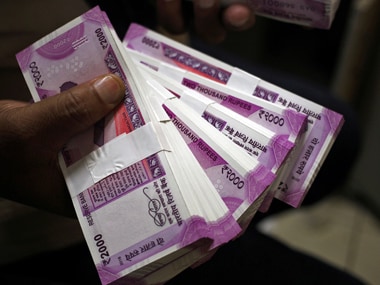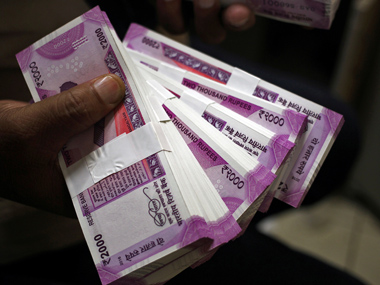An interesting commentary in Bloomberg by Andy Mukherjee points to the rather sticky long-term interest rates as denoted by the 10 years GSec at 7.4 percent notwithstanding the fact that the RBI has lowered the repo rate and indicated more of such cuts. The argument put forward is that high government borrowing has cornered a large proportion of savings which in turn has spooked yields. It has also been pointed out that the market is also buffering in the large off-market borrowing through PSUs which has further put pressure on yields. The explanation further goes on to say that some bit of panic on the side of the government due to the elections has caused higher spending given that GDP growth has slowed down and inflation is volatile. It is not surprising that the repo rate has been cut, but sure enough, the interest rates have not come down. There is an alternative view that can be taken here. The government has actually worked through the Budget well to ensure that all the prudential norms are followed. Therefore there is no sense of panic as such even though the Budget speech has spent more words on social welfare schemes. If we look at the fiscal deficit number it has remained unchanged in the Interim Budget at 3.4 percent. The absolute number is surely higher at Rs 7.04 lakh crore as against Rs 6.34 lakh crore in FY19 but the market goes by the ratio rather than the amount. This is so because the absolute quantum of the deficit has to increase when the size of the Budget increases as does the GDP number. Gross borrowing is also up at Rs 7.10 lakh cr (Rs 5.71 lakh cr), but this number is not as important as the net borrowings given that there are large repayments this year. In net terms it is Rs 4.73 lakh cr as against Rs 4.22 lakh crore - an increase of around Rs 50,000 cr only. The liquidity problem of FY19 is unlikely to be repeated in FY20 and hence this amount can be absorbed by the banks. [caption id=“attachment_6013191” align=“alignleft” width=“380”]  Representational image. Reuters.[/caption] The issue of off-balance sheet borrowing is interesting as this has been a way in which governments have borrowed over time to fund investment. This is done by PSUs. Interestingly, the Budget document shows that the off-Budget borrowings from the debt market are to be lower in FY20 relative to FY19 at Rs 1.8 lakh crore (Rs 1.93 lakh cr) and overall resources of PSUs are also lower at Rs 6.17 lakh cr (Rs 6.44 lakh cr). Therefore, while PSU borrowing is a back door entry, it is not ominous to spook the market. Why then are rates still high? The first reason is that there is a liquidity problem for sure which has called for RBI to intervene continuously by buying securities through OMO. This has been done to steady the market. The genesis of the crisis is due to deposits growing at a slower rate than credit. With interest rates being low households have moved away from banks to mutual funds and this, in turn, has led to the gap between deposits and credit. The increase in credit is on the retail end and services side rather than manufacturing where there are less investment and demand for funds. The NBFC crisis has made NBFCs borrow more from banks rather than the market and there has been a substitution to an extent. The problem is not with the government borrowing more in the market. Banks do not have lendable funds. Second, the NPA issue and 11 banks under PCA (which has seen exits now) was the other issue which kept banks away from lending for investment. The cost of borrowing has gone up for corporates which are affecting the system. The risk perceptions have not eased fully and while the NPA recognition part appears to be over, there is still less demand for funds as well as enthusiasm in lending. As long as liquidity is tense, GSec yields will remain higher and will not come down too soon. Government borrowings are not the main issue as there appears to be a parallel window of the RBI which involves buying securities to ensure that liquidity is available. In fact, while the MPC has indicated that there could be more cuts with a neutral stance being taken, the upside risks for inflation are high still with farm output being under the scanner, oil prices being uncertain, state fiscals being a concern and state pay commissions increasing salaries a definite possibility. Therefore the possibility of inflation increasing cannot be ruled out. Also, banks have not cut deposit rates after the RBI lowered the repo rate because they need deposits to grow. In fact, several banks have increased certain deposit rates of specific maturities to attract deposits. As long as deposit rates do not go down the base rate and MCLR will not follow suit and hence lending rates will remain intransigent. This is also getting reflected in the GSec market as all the rates are in harmony being synchronised now. It is true that as long as the risk-free return remains unchanged the credit risk premium for private borrowers will be sticky. The clue may not be so much as the government borrowing less as this is the only entity that is investing in real assets like roads, railways and urban development. Savings have to grow which can happen if incomes increase and interest rates make deposits more attractive so that banks have more lendable resources. This will hopefully happen in FY20 though one cannot be too sure given that until elections time, there would be a conservative view taken by the market. (The writer is chief economist, CARE ratings)
One of the reasons for high interest rates is the liquidity issue for which RBI is asked to intervene continuously by buying securities through OMO
Advertisement
End of Article
Written by Madan Sabnavis
Madan Sabnavis is Chief Economist at CARE Ratings. see more


)

)
)
)
)
)
)
)
)



